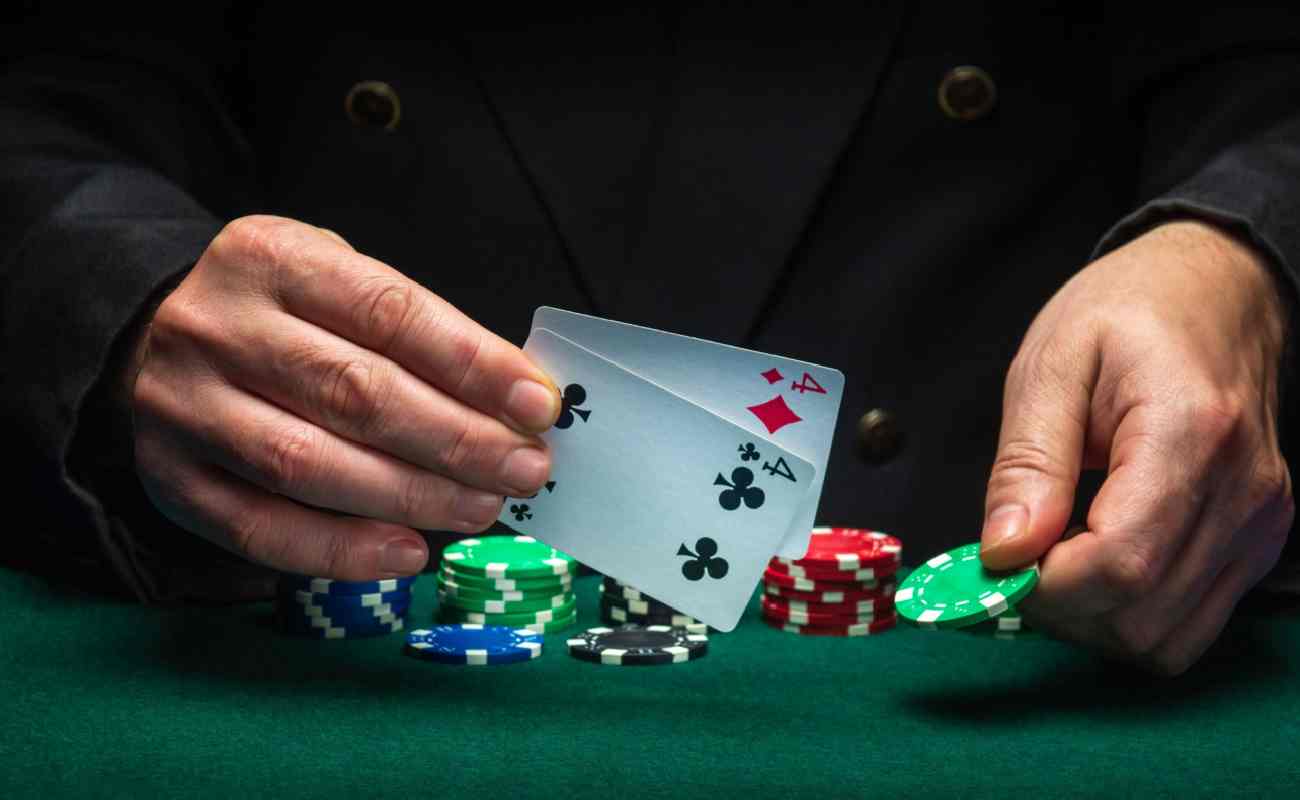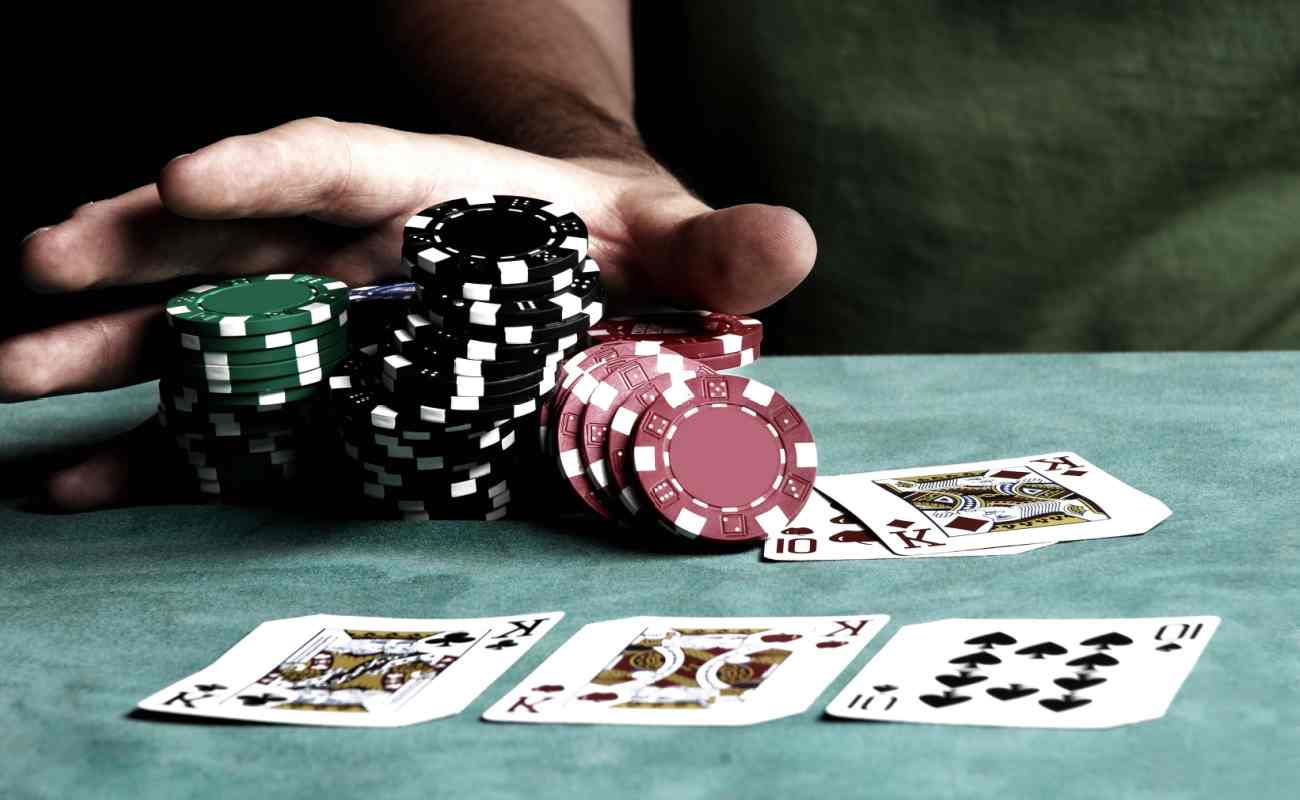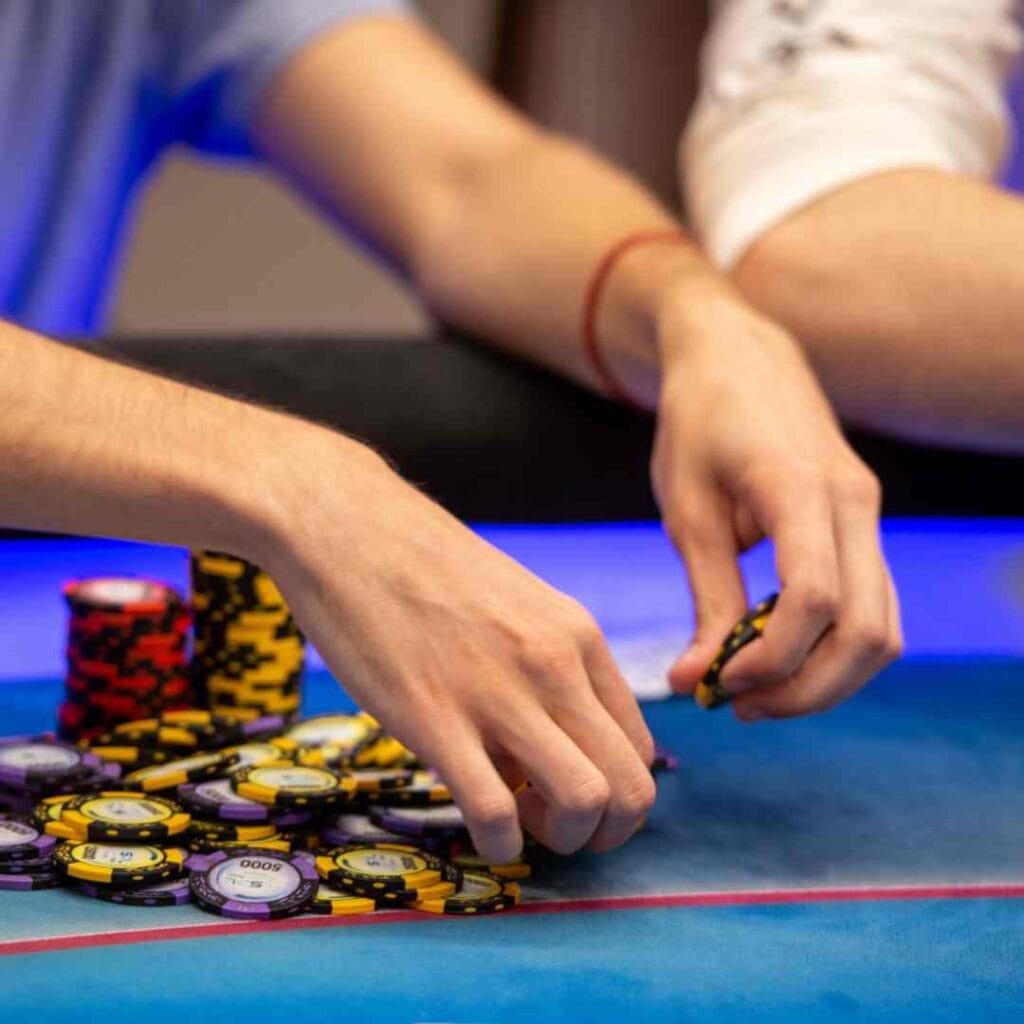
Whether playing Texas hold’em online or in a brick-and-mortar casino, the flop is the most crucial part of any game. Here, you get a better idea of your hand’s relative strength, and you must be ready to make important decisions.
Should you fold? Is it better to play aggressively? In this post, you’ll learn all about choosing the right postflop strategy and some exploits that will increase your success rate.
What Is the Flop
The flop is the second betting round in a game of Texas hold’em. It’s also where you see the first three community cards. Once these cards are revealed, you have a better idea of your own hand’s strength as well as that of your opponents.
Your postflop strategy decisions begin with asking yourself whether or not the cards have improved your hand. If they haven’t, consider folding and waiting for a better opportunity.
It’s also important to check for straight or flush draws. This is among the most vital poker tips for beginners since understanding how your hand might improve on later streets is crucial to success.
With those basic steps out of the way, your remaining postflop decisions will depend on the flop’s texture.
Categorizing the Flop

The way community cards interact with each other on the board is known as the “texture.” You’ll encounter a few different types, which can be categorized as follows.
Dry
A general term meaning that few draws are possible. The cards on the board are usually of different suits and not particularly connected, for example, Q♦ 7♠ 3♥.
Wet
An “action” flop where the cards offer plenty of flush and straight draws as well as high-ranking cards. An example would be K♣ T♣ 9♣.
Paired
A board where two cards have matching rankings, making a pair. An example would be A♦ A♣ 5♦.
Two-Tone
A two-tone board features two cards of the same suit, although they don’t necessarily have to be close together — for example, 8♣ 2♣ Q♥.
Monotone
All cards share the same suit but are not necessarily close together, for example, 3♦ 7♦ A♦.
Connected
A board featuring cards that are closely matched in rank, though they aren’t necessarily of the same suit. An example would be 5♣ 3♦ 4♠.
Some of these categories overlap. The terms “dry” and “wet” are the most common ways to describe a board’s texture.
Postflop Strategy
There’s a lot to consider on the flop. To find successful postflop poker strategies as a beginner, you must always consider your opponents. You should also have a good understanding of the strength of your own hand. Even if you miss the flop, it’s still possible to capitalize on opportunities and take the pot.
Betting Postflop
Making correctly-sized poker bets is vital for postflop strategy. Whether you’re playing at an online poker game or a live table, your bets should always aim to achieve one of three things.
With a good hand, you’ll either be betting to extract the maximum value or to thin the field and protect the pot. With a bad hand, you’ll be looking to bluff.
However, if you have a marginal hand against an opponent whose range connects with the flop, try to avoid betting. This will help to control the pot size, preventing it from growing too big.
Finally, it’s best to avoid slowplaying when you have a very strong hand. Look to build a pot and don’t leave money on the table.
When You Miss the Flop
Knowing which action to take when you hit the flop is easy. But what about when you don’t have anything? Well, in that case, checking and folding to any aggression is usually the best approach. You may try bluffing, but this will depend on the type of opponents you’re playing against.
If your hand is unmade but you have a potential draw, consider how strong it is. For example, an open-ended straight draw is easier to play than a gutshot draw. Backdoor draws can improve a made hand’s playability, but should be avoided if they’re all you have.
Poker Exploits To Use Postflop
If you want to mix things up and get better results postflop, there are some useful exploits you should know about. These are great ways to exploit an opponent’s weaknesses and build your stack.
Fold More on the River
By the time you reach the river, you might feel tempted to call even if the pot odds aren’t necessarily in your favor. However, you shouldn’t play hands just for the sake of it. To increase your win rate, get used to folding more on the river. While it may seem counterintuitive, it will preserve your chips in the long run.
This is most useful when you’re up against an opponent who normally plays tight or passively. If they suddenly make a big bet, it’s unlikely they’re bluffing in this situation. In addition, if the board features a strong draw, it’s not likely that they’d risk you holding a straight or flush. They probably have the goods. So, rather than putting your stack in danger, you’re better off simply folding.
Attack Wider Ranges

Some players are very loose and aggressive, playing too many hands. If an opponent folds 40% of the time or less after the flop, they’re a great target for exploitation.
Don’t pressure them too early. Let them enter the pot and take the lead before increasing your bet sizes. Aim to push them off the pot and take their chips later in the hand.
Weaker players will have trouble defending when playing with a wide range. They often can’t cope with the pressure. This is why paying attention to your opponents and how they play is so important. By doing so, you create new opportunities for yourself.
Play Aggressive Against Capped Ranges
Another way to exploit your opponents’ postflop is by looking for those that play with capped ranges. A capped range has an upper limit on how strong it can be. For example, they could have a good pair but are very unlikely to have a flush or straight.
Spotting capped ranges relies on closely watching the actions of your opponents. If they play a hand passively when the line they’re taking suggests they should have been more aggressive, their range is likely capped.
Exploit them in these situations by playing aggressively, making big bets, and forcing them to fold.
Dominate Postflop Poker
Postflop poker is where you’ll make your money, so it’s vital that you play well. To bolster your typical postflop strategy, look to exploit your opponents and their unique behaviors. Pay close attention to how they play and ensure you don’t pass up the opportunity to take the pot down.
If you want to play poker at a high-quality, legal and secure online casino, register with Borgata Online. There are hundreds of cash game tables and tournaments, and it couldn’t be easier to start playing for real money.
